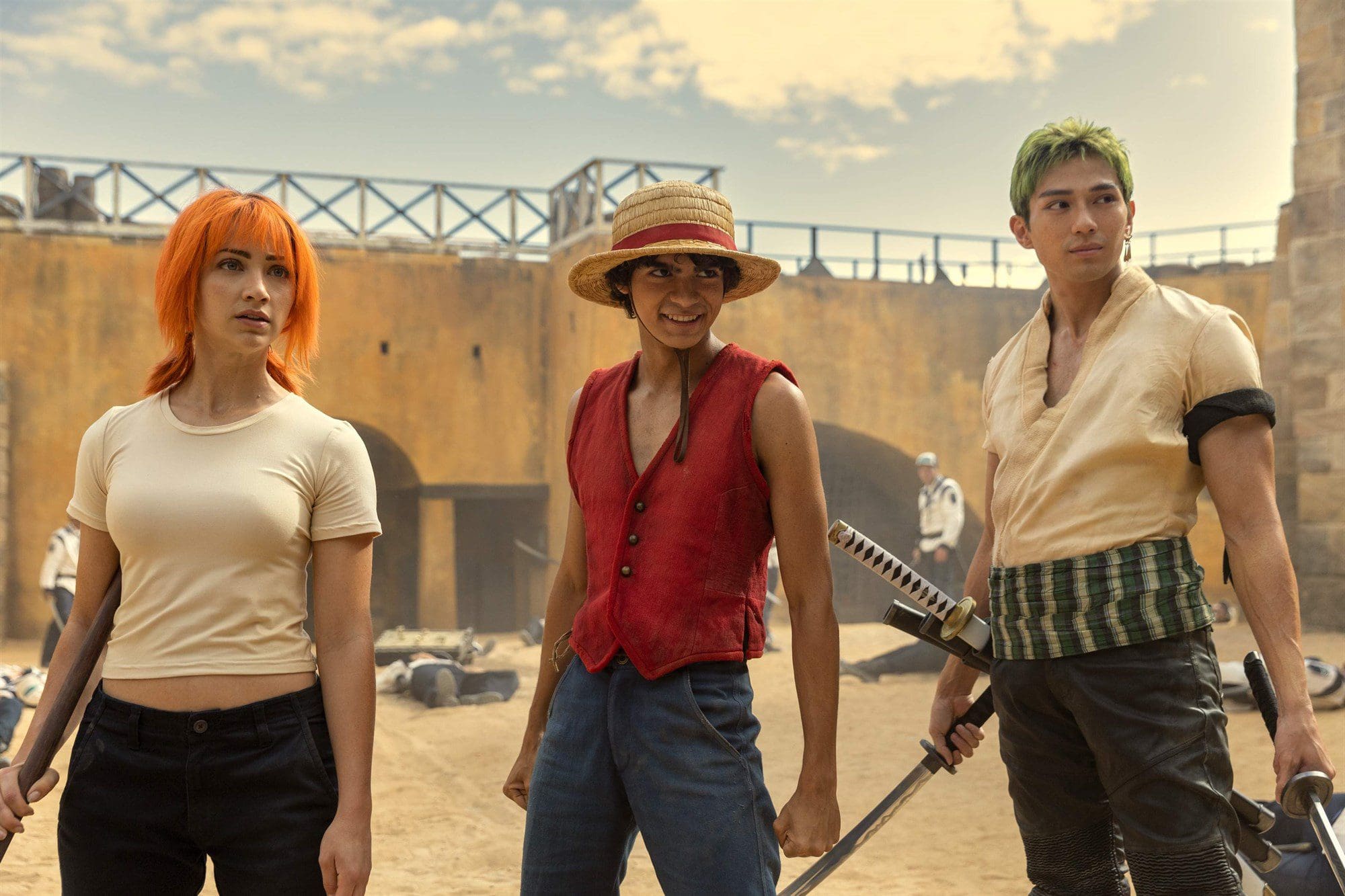
Written by Veda Kota
There are a few universal truths that anime fans hold dear:
- The power of friendship always saves the day.
- Every shoujo has at least one beach episode.
- Live-action adaptations are almost always terrible.
Live-action adaptations of manga/anime tend to fail on a few accounts: the casting is off, or they are not faithful to the source material, or the special effects fall flat due to lack of understanding, or lack of a budget. Yours truly has yet to meet a single anime fan that has even a neutral view of a live action adaptation due to anime’s inherent ability to capture the fantastical and unimaginable.
So, it was no surprise that fans were extremely skeptical when Netflix announced a live action remake of the first 95 chapters of One Piece — one of the most critically and commercially successful mangas of all time. The series with its mangaka Eiichiro Oda continuing the series well into the 1000-chapter range. One Piece is a series that truly takes advantage of its creative medium by utilizing strange body effects and whimsical character designs that are difficult to adapt to the silver screen.
One Piece follows a fairly straightforward shonen manga plotline: the main character is bright, spunky, and has some lofty goal in mind. They have a gang of friends and traverse faraway lands and meet different heroes and villains along the way, all while chasing their dreams and building lifelong bonds. In this case, Monkey D. Luffy, an orphan, has a dream of becoming the king of pirates by finding infamous pirate Gol D. Roger’s elusive treasure: The One Piece.
The strength of the series lies in its ability to craft and develop unique characters with settings and plot points that actively support their growth. So, for Netflix to truly pay homage to this renowned series, more than special effects, the casting and setting had to be top notch. Oda even flew to set several times to actively supervise various aspects of the process and ensure that the show was faithful to his creative project.
On August 31st, all eight one-hour episodes of the live-action One Piece released on Netflix. The praise was almost instant, both from critics and fans. Fans praised the accuracy to source material and the almost one-to-one portrayals of the characters, and critics lauded the ability for the live action to portray the whimsical backdrop for the story. Fans particularly seemed to like Luffy’s actor, Inaki Godoy, someone who could only be described as “a ray of sunshine.” Godoy’s unabashed boyish charm and devastating earnestness ensured that he fully transformed into the titular Monkey D. Luffy.
Fans also enjoyed the performances by Jacob Romero, who plays Usopp, and the buddy-comedy dynamic between the two. Taz Skylar managed to pull off the charm of suave crew cook Sanji with ease, his performance only being amplified by the cast – in particular, Mackenyu Arata, who plays Zoro, and Emily Rudd, who plays Nami. Personally, it was clear that many fans were talking about the introduction of Mihawk, played by Steven Ward, especially the use of sassy dialogue punctuated by the occasional kill with his large sword. Buggy, portrayed by Jeff Ward, received an astonishing amount of praise, with some Twitter users stating that his virality thanks to the show is “a very Buggy thing to happen.”
Animation is a medium for creatives to express what is impossible, unfathomable, or bizarre. Luffy’s signature power is his stretchy skin, while Buggy’s power is his ability to split his body into pieces. On top of that, there are several hybrid creatures throughout the story’s universe. In live-action adaptations, there is often a hesitation to embrace the absurd, but One Piece has been the most successful so far. While it falls flat at times and accidentally delivers elements of body horror, it seems to take the message of animation to heart and faithfully attempts to carry out Oda’s vision.
Ultimately, the show’s strongest point is that it doesn’t try to take itself too seriously. Anime fans often lament over how “corny” the English dubs of anime are but forget that to Japanese speakers, it likely sounds like that too. Campy dialogue is sprinkled throughout One Piece, with each of the actors fully embracing the silliness of their situations and carrying out the lines with ease. The show feels like a fun adventure, one where the Straw Hat crew takes the viewers on a journey with them and urges you to embrace the sense of adventure they were also once hesitant to.
The live-action adaptation certainly isn’t perfect, with some plot-points being weakened for the sake of the show and some characterization being slightly changed (for example, the decision to make Zoro much more stoic). However, this is by far the most successful attempt at a live action remake for any anime, and if the overwhelming praise is any indication, fans and critics alike agree. If Netflix decides to adapt more episodes, it will be interesting to see how they tackle other parts of the series, such as the larger-than-life character Doflamingo, or several other plot points. Whether you’re a fan of the show or not, I’d recommend you set sail with the Straw Hats and enjoy a very fun eight hours.

